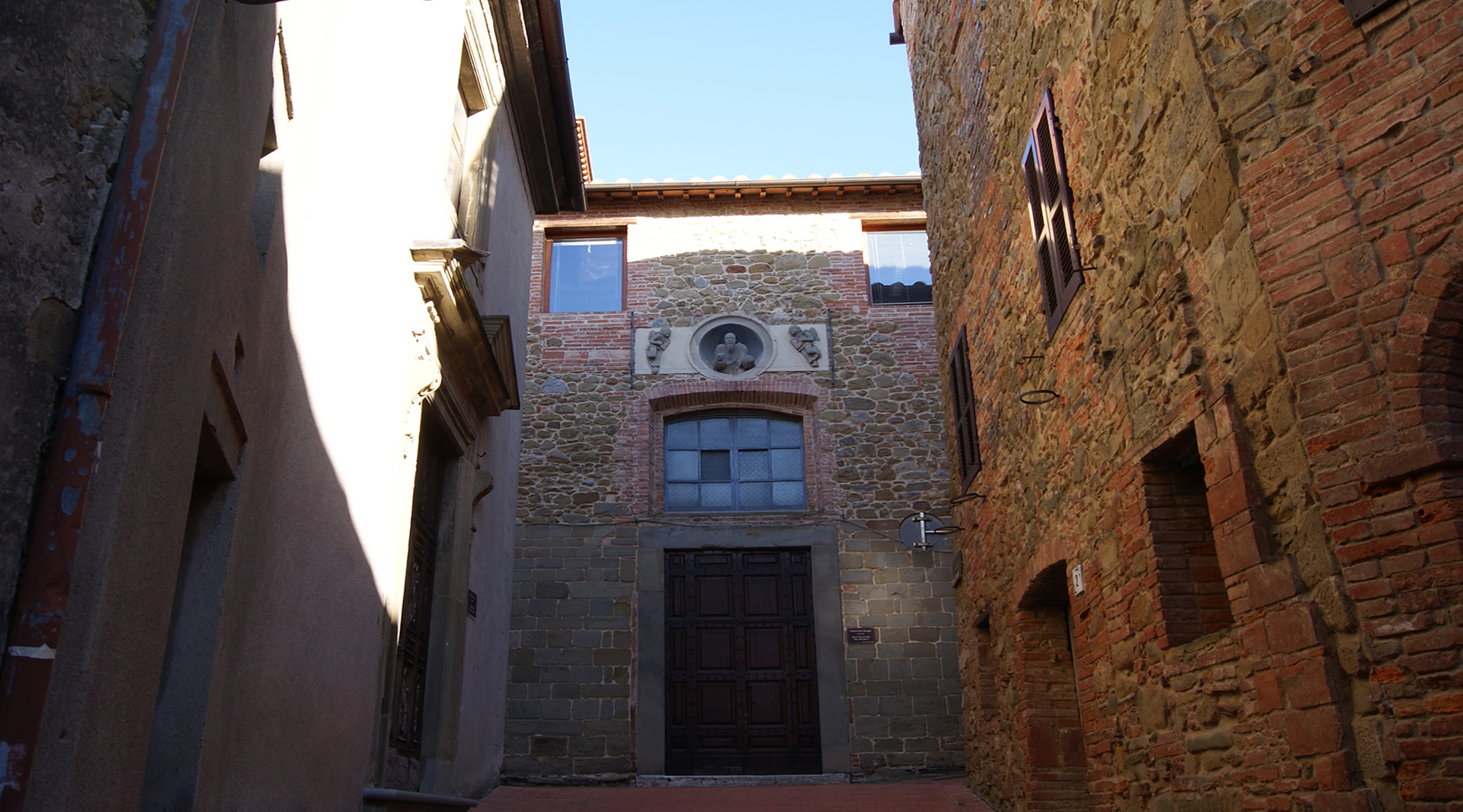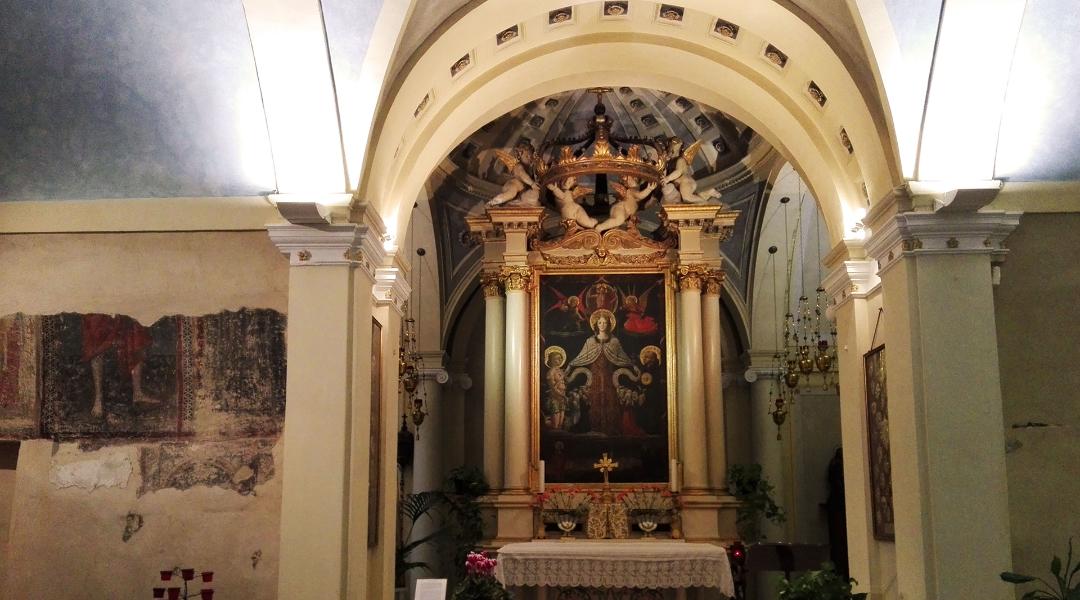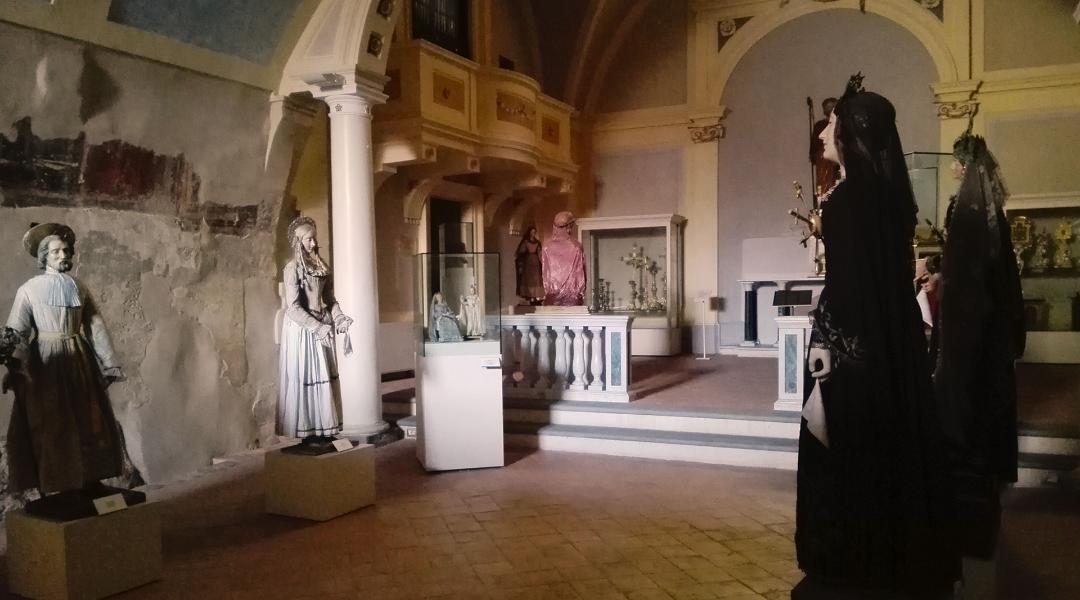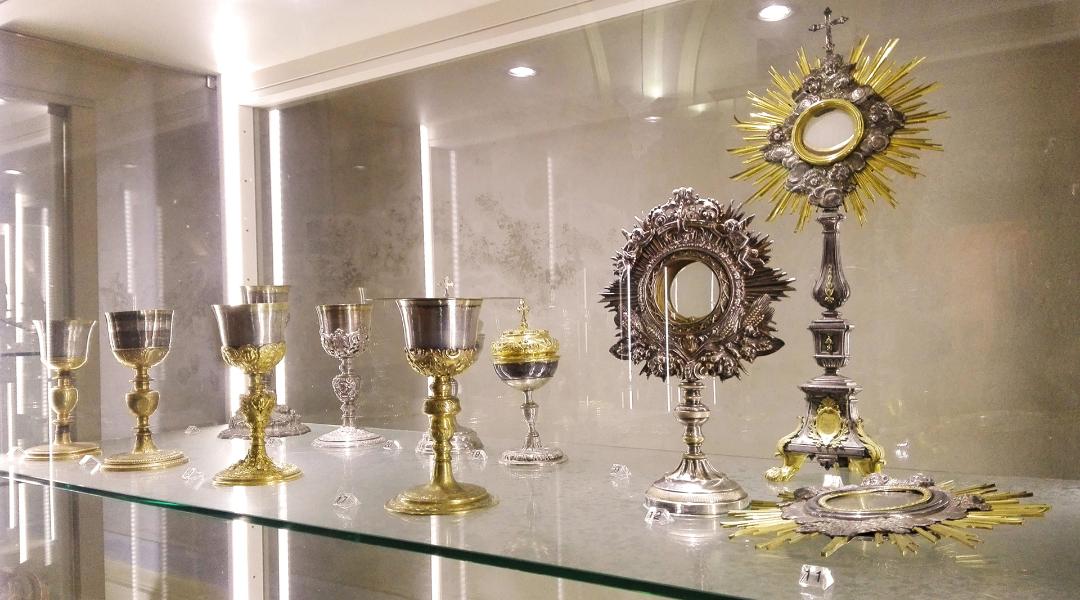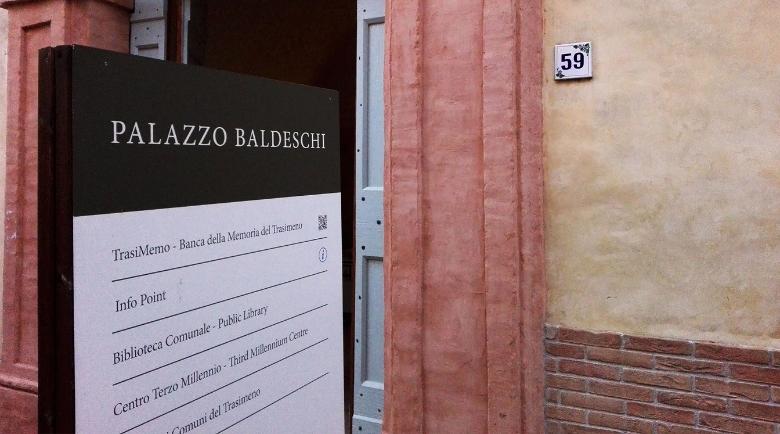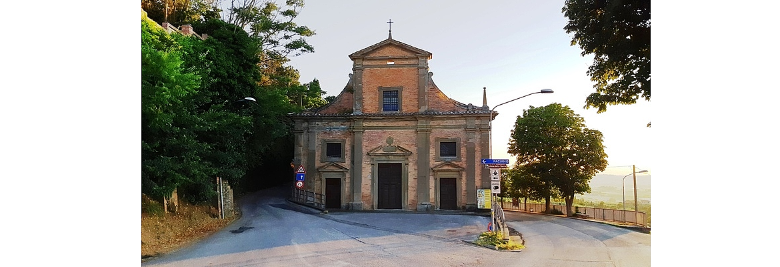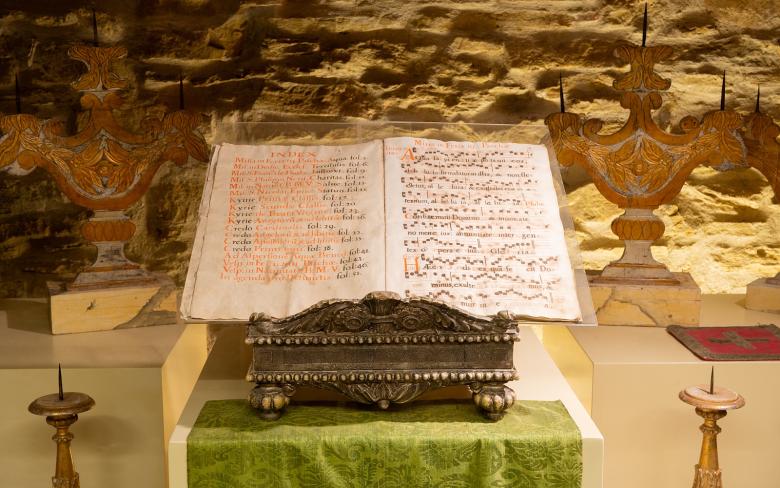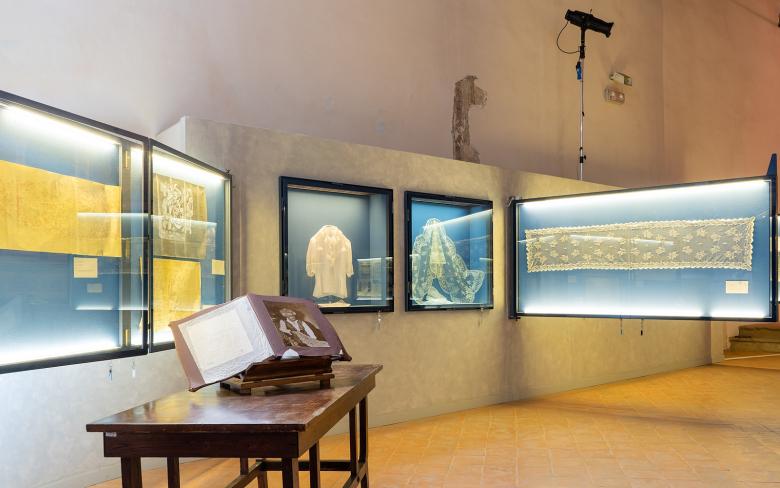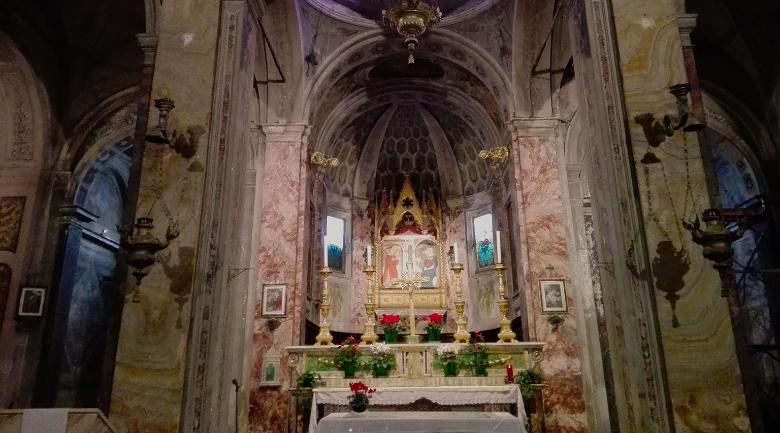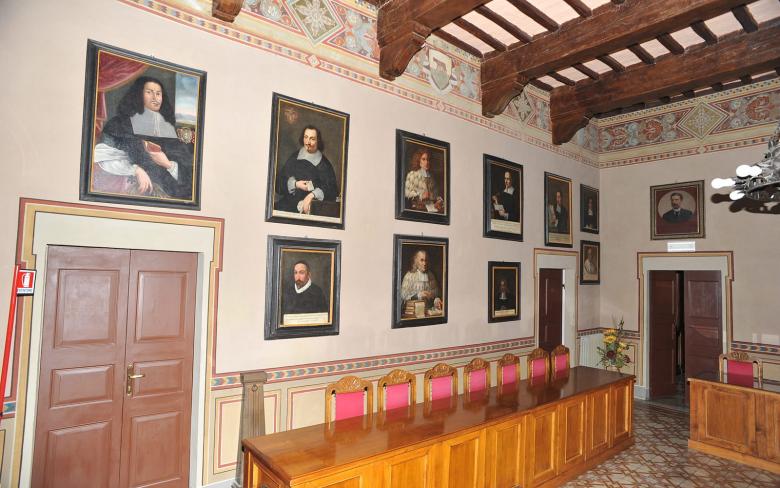Anthony convent) and two Saint Lucia paintings.
A small section is dedicated to the Pacianese Antonio Castelletti (1764-1840) with the Mysteries, an early work connected with the painting of the
Madonna del Rosario, preserved in the parish and the processional Gonfalone Santa Bonosa, patroness of Paciano. The section ends with the reconstruction of the altarpiece of Antonio and Giovanni Sparapane and their two paintings depicting Santa Mustiola and St. Peter the Apostle (1475-78).
Museum: Inside St. Joseph's Church the spaces have been recently restored. Immediately past the entrance to the church, also known as Santa Maria dell’Immacolata Concezione Church and in the Chapel of the Immacolata Concezione, the Banner of the Madonna delle Grazie, made around 1470 by Benedetto Bonfigli, is located. Down the nave, where in 2000 a number of votive frescoes dating back to the 15th century (two bearing the date 1444 and 1449) depicting saints and Majesty have resurfaced, there are some wooden statues: St. Joseph, of the 17th century, two
Addolorate (17th and 18th century) and a 17th century Virgin of the Rosario, with real hair, the Nativity (end of the 17th century) and a Christ Child called
dell'Aracoeli, in painted wax. At the top, above the altar hangs a Crucifixion of the Bolognese school of the mid-eighteenth century.
Inside the presbyterial space dominated by the delightful chancel and framed by two neoclassical columns, as well as some 17th and 18th century reliefs (Angel, Ecce Homo, Head of Christ and Immaculate) and the statue of St. Joseph, placed in the niche on the altar, are a series of displays in which are placed valuable ecclesiastical furnishings of the 16th-18th century: crosses; monstrances; chalices; pyxes; table, sprinkling and incense services; reliquaries; tabernacles; papier-mâché, candelabra and candlesticks. Among the goblets there are finds of great value such as the one dated 1591 and two other examples of the sixteenth century.
The painting by Francesco Appiani (1704-1792) depicting the Marriage of the Virgin is located here, in the space where it has always been. Beyond the confraternity tables you go up to the mezzanine floor where there are the small room of the archaeological finds, discovered after the Second World War near the archaeological area of Fonteboccio. In the adjacent room there are some of the most significant sacred vestments of the territory, for importance and antiquity. A small opening inside the old bell tower leads to the chancel, where there is a valuable organ by Adamo Rossi dated 1795.
























